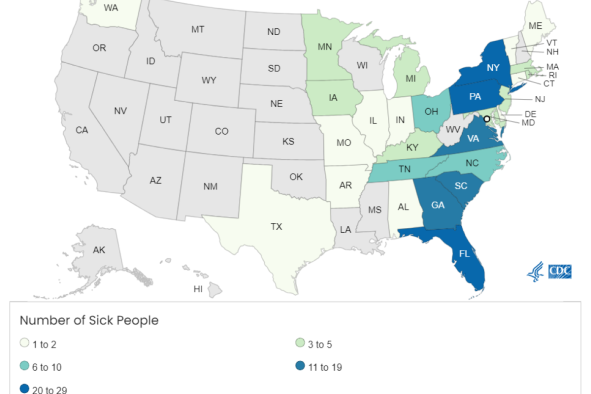Strange holes in the surface of our neighboring planet may one day provide areas where astronauts can shelter.
A mysterious pit on Mars, captured by NASA's Mars Reconnaissance Orbiter (MRO), has reignited interest in the potential of these features to support future human missions to the Red Planet.
The pit, which is only a few feet across, is located on the slopes of the Martian volcano Arsia Mons, and is one of many such holes on the planet that may lead to larger underground caverns. These pits could therefore possibly provide protection from the planet's high radiation levels, meteorite strikes, and extreme temperatures, making them suitable for human habitation.
NASA's MRO first imaged this particular pit on August 15, 2022, from an altitude of 159 miles above the Martian surface. It is one of many found on the flanks of the Tharsis region's three large volcanoes.
Scientists are unsure whether this pit is a narrow vertical shaft—such as those found on Hawaiian volcanos—or if it opens into a more extensive cavern or ancient lava tube formed when the volcano was active.
"There's more than one of these [pits] on Mars that we've seen. But they're really interesting because they're places where astronauts might be able to go and be safe from radiation," Brandon Johnson, a geophysicist at Purdue University, told Business Insider.
Mars lacks a global magnetic field and has a thin atmosphere, offering little protection from space radiation, which is between 40 and 50 times higher than on Earth, posing significant risks to human health. These pits, potentially opening into larger caves, could offer a solution by providing a natural shield against radiation.
"On the Earth, these lava tubes can be large enough to walk around in, but they can also be small or the voids can be discrete or discontinuous," Ross Beyer, a planetary scientist with the SETI Institute, told Business Insider. "So these pits we see could open into larger caves, or they could just be isolated pits. There's no way to know what's in them until we explore them in more detail."
The pits may therefore also hold astrobiological significance, as the subterranean environments could have provided a stable, protected habitat for microbial life in Mars' past. Some pits on the moon have been found to maintain temperatures of about 63 degrees Fahrenheit, suggesting similar conditions could exist on Mars.
"This is a good place to look, but we don't know if there's life on Mars at all," Johnson said.
While the potential of these pits is promising, significant challenges remain, as current orbital imagery provides limited views into the depths of these formations, making it difficult to determine their exact structure and extent.
"Unfortunately, there is a limit to the 'angle' that we can get from orbit to look 'into' these pits. So sometimes we can see 'walls' and sometimes we can't," Beyer said.
Future missions may need to deploy rovers or aerial drones capable of descending into the pits to gather detailed data.
"There are missions proposed to essentially have a robot go on a line and drop down into one of these skylights and be able to explore what's inside of them," Johnson said.
Do you have a tip on a science story that Newsweek should be covering? Do you have a question about Mars? Let us know via science@newsweek.com.
Disclaimer: The copyright of this article belongs to the original author. Reposting this article is solely for the purpose of information dissemination and does not constitute any investment advice. If there is any infringement, please contact us immediately. We will make corrections or deletions as necessary. Thank you.



